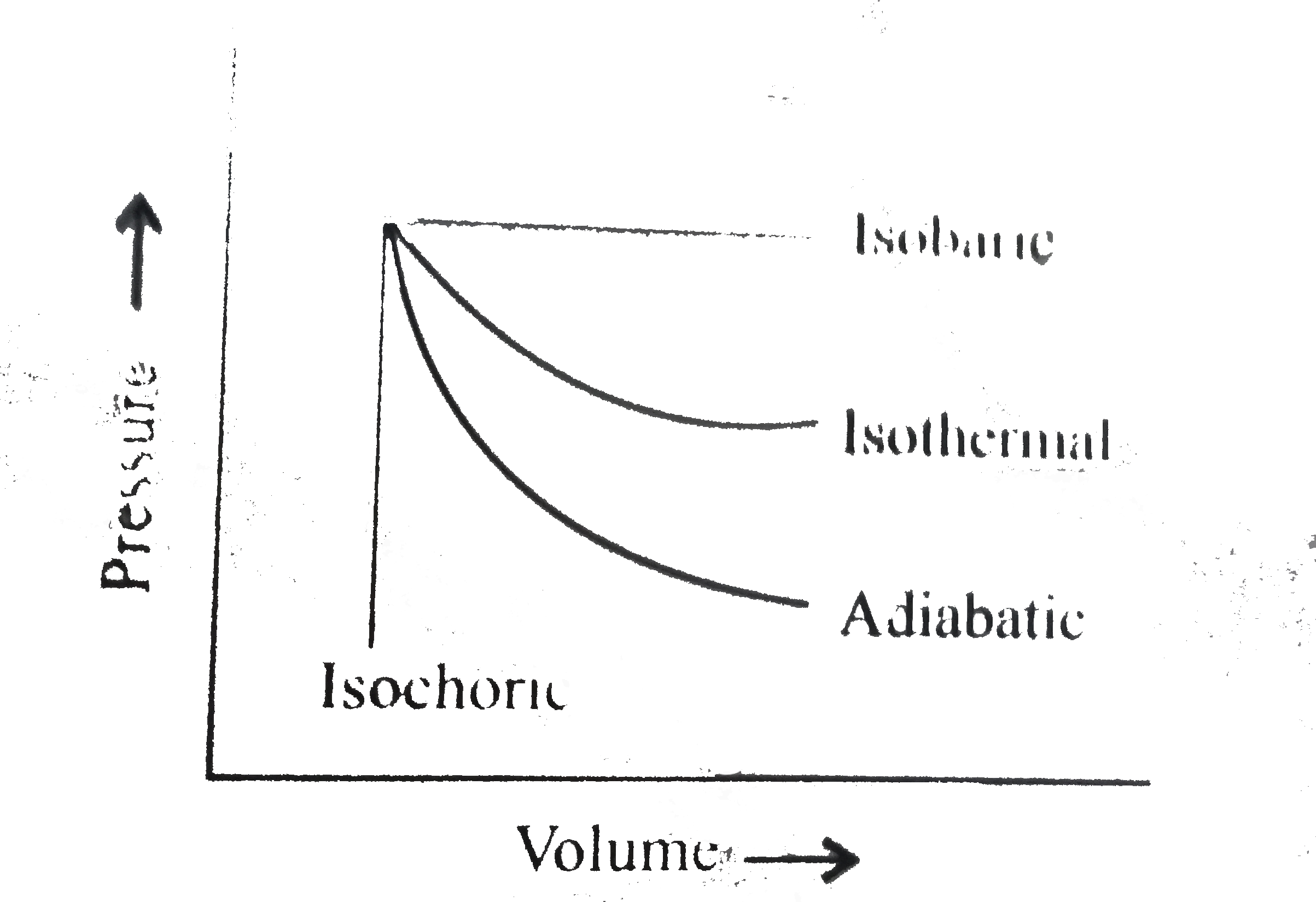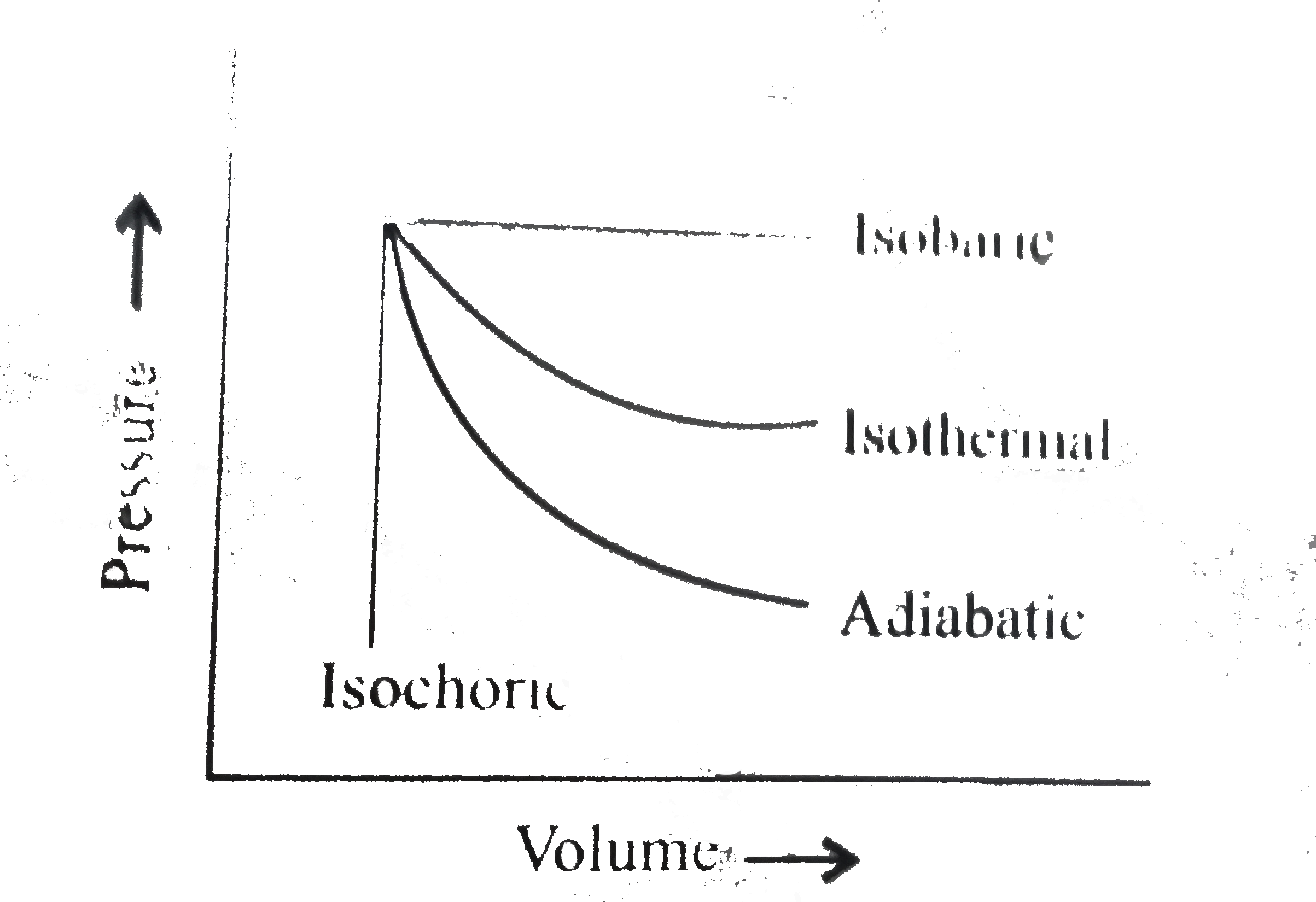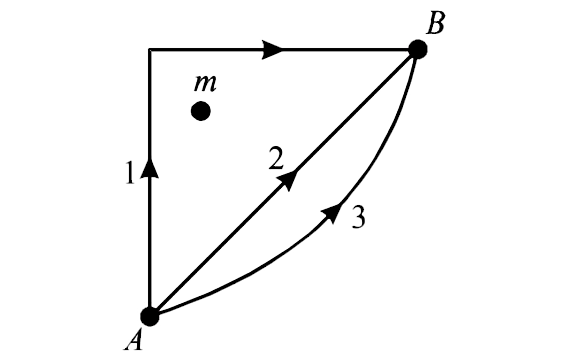If w1.w2,w3 and w4 are work done in isothermal, adiabatic, isobaric, and isochoric reversible expansion for an ideal gas, respectively, then
W3>W1>W2
W3>W2>W1
W2>W1>W3
W1>W2>W3
The correct Answer is:A
Step by step video, text & image solution for If w_(1).w_(2),w_(3) and w_(4) are work done in isothermal, adiabatic, isobaric, and isochoric reversible expansion for an ideal gas, respectively, then by Chemistry experts to help you in doubts & scoring excellent marks in Class 12 exams.
Updated on:21/07/2023Topper's Solved these Questions
- THERMODYNAMICSBOOK - RESONANCECHAPTER - THERMODYNAMICSEXERCISE - Exercise -2 Part-I: Only one option correct type
23 Videos
- THERMODYNAMICSBOOK - RESONANCECHAPTER - THERMODYNAMICSEXERCISE - Exercise-2 II: Single and double value integer type
16 Videos
- THERMODYNAMICSBOOK - RESONANCECHAPTER - THERMODYNAMICSEXERCISE - H-1
1 Videos
- TEST SERIESBOOK - RESONANCECHAPTER - TEST SERIESEXERCISE - CHEMISTRY
50 Videos
Similar Questions
One mole of an ideal gas undergoes two different cyclic processes I and II, as shown in the P - V diagrams belowIn cycle I, processes a, b, c and d are isobaric, isothermal, isobaric and isochoric, respectively. In cycle IIprocesses a' b' , cand d' are isothermal, isochoric, isobaric and isochoric, respectivelyThe total work done during cycle I is WI and that during cycle II is WII. The ratio WI /WII is

View SolutionIf W1W2,W3andW4 are work done in isothermal, adiabatic, isobaric and isochoric reversible process, the correct order (for expansion) will be
View Solution
Knowledge Check
The pressure-volume of varies thermodynamic process is shown in graphs:

Work is the mole of transference of energy. It has been observed that reversible work done by the system is the maximum obtainable work.
wrev>wirr
The works of isothermal and adiabatic processes are different from each other.
wisothermal reversible=2.303nRTlog10(V2V1)
=2.303nRTlog10(P2P1)
wadiabatic reversible=CV(T1−T2)
If w1,w2,w3 and w4 are work done in isothermal, adiabatic, isobaric, and isochoric reversible processes, respectively then the correct sequence (for expansion) would beAw1<w2<w3<w4Bw3=w2=w1=w4Cw3<w2<w4<w1Dw3>w1>w2>w4If w1,w2,w3 and w4 for an ideal gas are magnitude of work done in isothermal, adiabatic, isobaric and isochoric reversible expansion processes, the correct order will be :
Aw1>w2>w3>w4Bw3>w2>w1>w4Cw3>w2>w4>w1Dw3>w1>w2>w4Work is the mode of transference of energy. If the system involves gaseous substance and there is difference of pressure between system and surroundings, such a work is referred to as pressure - volume work (WPV=−PextΔV). It has been observed that reversible work done by the system is the maximum obtainable work. wrev>wirr
The works of isothermal and adiabatic processes are different from each other. for isothermal reversible proces,
Wisothermal reversible=2.303nRTlog10(V2V1)
Wadiabatic reversible=CV(T1−T2)
Calculate work done when 1 mole of an ideal gas is expanded reversibly from 20 L to 40 L at a constant temperature of 300 K.Aw1>w2>w3>w4Bw3>w2>w1>w4Cw3>w2>w4>w1Dw3>w1>w2>w4
Which expression is correct for the work done in adiabatic reversible expansion of an ideal gas
View SolutionWhich expression is correct for the work done in adiabatic reversible expansion of an ideal gas?
View SolutionThe pressure-volume of varies thermodynamic process is shown in graphs:

Work is the mole of transference of energy. It has been observed that reversible work done by the system is the maximum obtainable work.
wrev>wirr
The works of isothermal and adiabatic processes are different from each other.
wisothermal reversible=2.303nRTlog10(V2V1)
=2.303nRTlog10(P2P1)
wadiabatic reversible=CV(T1−T2)
The q value and work done in isothermal reversible expansion of one mole of an ideal gas from initial pressure of 1 bar to final pressure of 0.1 bar at constant temperature 273K are:
View SolutionIn a reversible isothermal expansion of ideal gas, the work done is given by the expression
View SolutionIf W1W2 and W3 represent the work done in moving a particle from A to B along three different paths 1.2 and3 respectively (as shown ) in the gravitational fieled of a point mass m, find the correct relation between W_(1) W_(2)andW_(3)

View Solution
